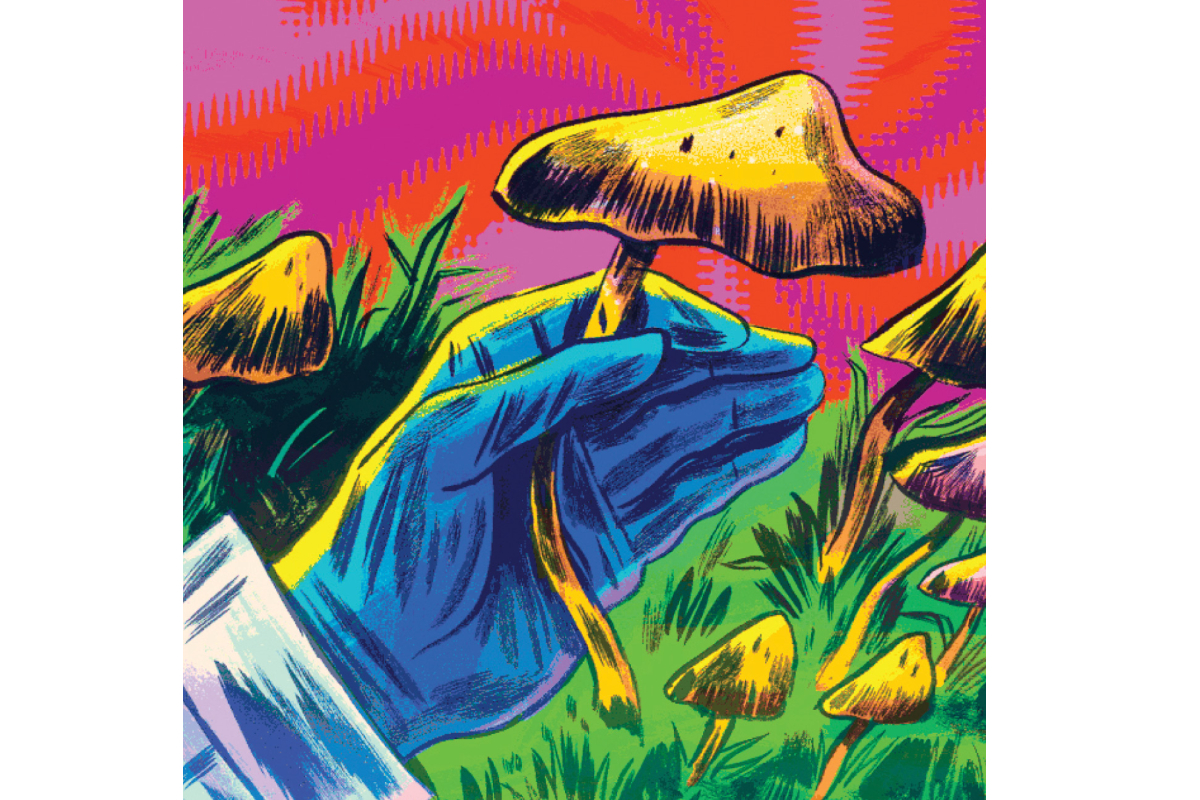
‘Magic’ of Mushrooms
New varieties of high-end drugs flood the narcotics market
A mushroom species which contains intoxicants and has long been used in religious gatherings to trigger ecstasy among the devotees, is found to have made its way into Pakistan’s drugs markets, especially in the federal capital, Islamabad, Bol News has found.
But there is no official data available on the extent of its spread.
Called the Magic Mushroom, this specie of the edible fleshy vegetation is found in many parts of the world, including India, but is largely found in the Americas, especially Mexico. Given its demand due to its hallucinogenic effects, it is now also cultivated in various regions although its farming is illegal in many countries.
Experts say that consumption of Magic Mushroom leads to visual and audio hallucinations which may last for several hours. They contain psilocybin, a hallucinogenic compound which once taken, converts in the body to psilocin, a chemical with psychoactive properties. As such, they are a psychedelic drug that can affect the user’s thinking, her/his sense of time and emotions, and cause hallucinations – seeing or hearing things that do not exist or are distorted.
An official of the Anti-Narcotics Force (ANF), the agency which controls drugs, says there is no ANF report suggesting that Magic Mushrooms, or any edible or injectable drugs derived from it, have been confiscated so far.
He explained, however, that street names for various drugs vary – like hashish is called ‘buti’ by street vendors and users. Also, they are sold in different forms and shapes in different countries. So, if there is a street name for this particular drug, and the form it’s packaged in, it is not officially known yet.
However, Bol News has learnt that some people from well-off families of Islamabad taste it occasionally or on a regular basis.
There have been some high-profile killings in Islamabad recently which were widely covered by the media. There has been talk in some circles about the reason for those killings being possibly linked to psychedelic drugs.
But police investigations so far have not brought forth any such links in their investigations.
Meanwhile, according to ANF data submitted to the National Assembly, a total of 68 metric tons of drugs have been seized by it during the year until July 2022.
Hashish tops the list of seizures with 30,721 kilograms, followed by opium with 9,092kgs and heroin with 6,233kgs. Some other drugs seized include morphine, crystal, cocaine, amphetamine, meth, ecstasy tablets and some others.
According to the ANF, Afghanistan is the largest drug producing country. It produces 84 percent of the total international opium production, and has in recent years also increased its production of ice (methamphetamine).
Given that the country is under international sanctions and its economic deterioration has crossed all limits, officials expect that its drugs market will continue to expand as an alternative source to support its domestic economy.
Due to its close proximity with Afghanistan, Pakistan is a destination of choice for the shipment of Afghan drugs and opiates. It is estimated that approximately 30 percent of Afghan drugs transit through Pakistan, according to ANF. Likewise, there is a reverse flow from Pakistan into Afghanistan of the precursor chemicals used in drug production.
Although the fencing of the Pak-Afghan border by Pakistan has greatly reduced the free movement of drugs, ANF says that trafficking of drugs via borders with unfinished fencing and through border crossing points in the garb of trade still continues.
Meanwhile, Bol News has also found that no fresh data on drug users is available in Pakistan. The last survey was conducted in 2013, which found that a total of 6.7 million people between the ages of 15 to 64 were using illicit drugs, including the misuse of prescription drugs.
Subsequently, however, in pursuance of Anti-Narcotics Control Policy 2019, an Inter-Agencies Task Force (IATF) has been set up under the ANF to ensure coordinated implementation of the counter-narcotics enforcement strategy.
Meanwhile, the ANF is running three model addiction treatment centres at Karachi, Sukkur and Hyderabad in collaboration with the Government of Sindh, officials said.
Catch all the National Nerve News, Breaking News Event and Latest News Updates on The BOL News
Download The BOL News App to get the Daily News Update & Live News.












 Read the complete story text.
Read the complete story text. Listen to audio of the story.
Listen to audio of the story.